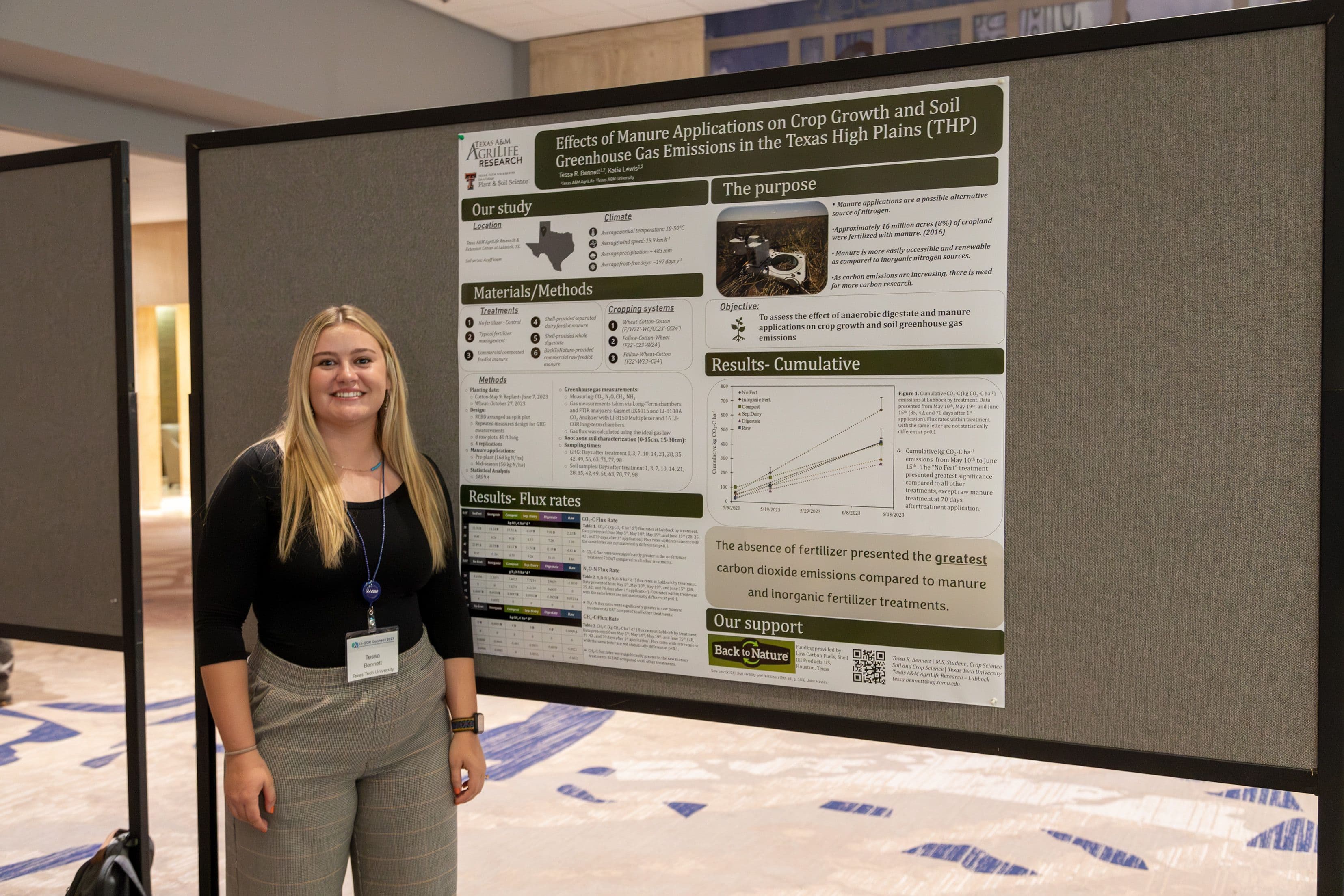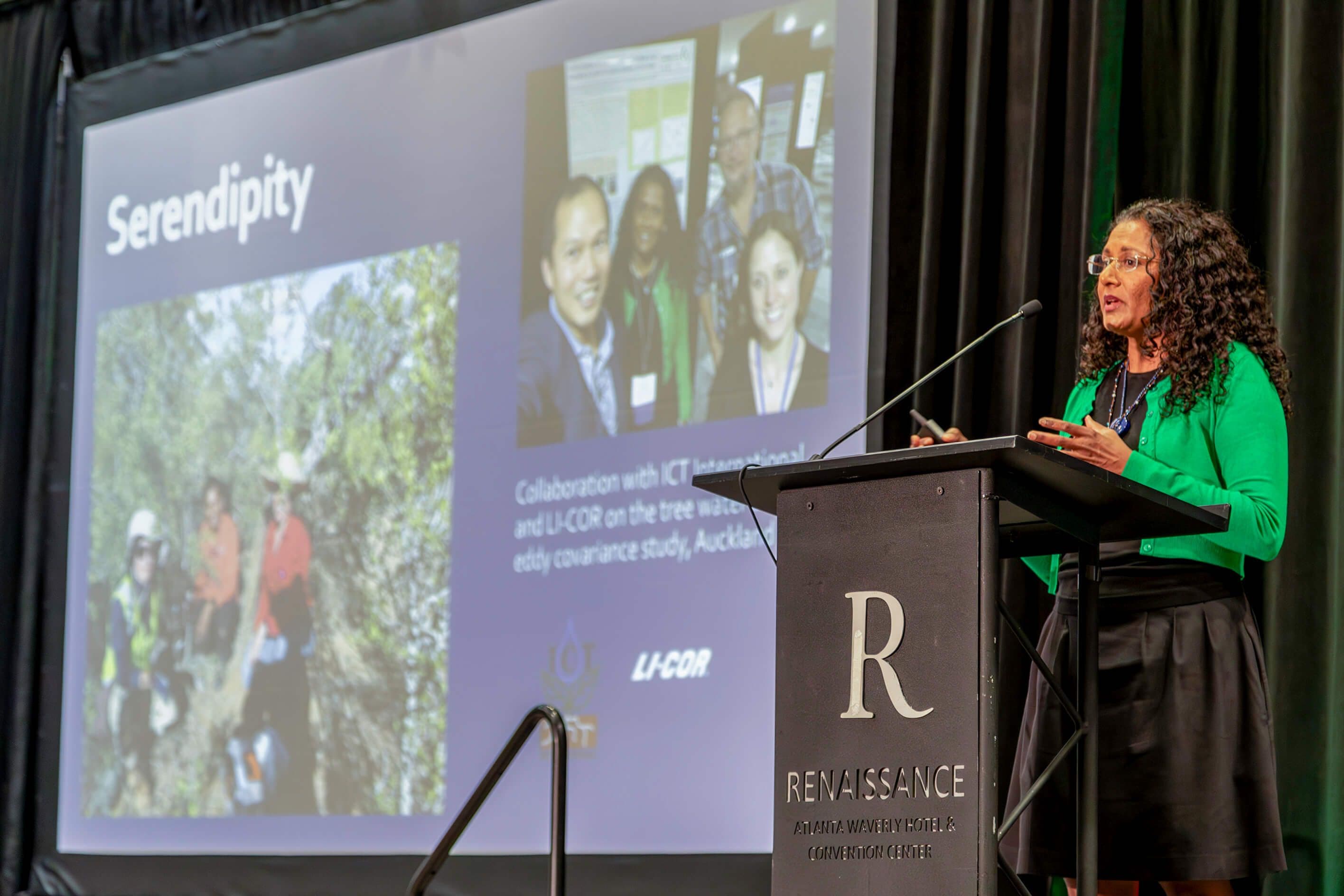
Impact of Drought Intensity on Whole-Tree Carbon Sequestration, Storage, and Growth through Recovery
Presenting Author: Franklin Alongi | Karlsruhe Institute of Technology, IMK-IFU
Soil Gas Exchange

Fluxes of CO₂, CH₄ and N₂O from temperate forest soils under elevated CO₂ at BIFoR-FACE
Presenting Author: Alex Armstrong | University of Birmingham, UK
Soil Gas Exchange

It Takes Two to Tango: Microbial Communities and Greenhouse Gas Dynamics in Malaysian Oil Palm Plantations
Presenting Author: Zahidah Ayob | Malaysian Palm Oil Board
Leaf-level Gas Exchange

Impact of Fertilizer Rates on Nitrous Oxide Emissions
Presenting Author: Sofia Bahmutsky | Olds College of Agriculture & Technology, University of British Columbia
Ecosystem Scale

Stomatal and photosystem responses to controlled environment agriculture and its influence on isoprenoid biosynthesis and operational sustainability.
Presenting Author: Courtney Bridges | Endless Biotechnology
Leaf-level Gas Exchange

Exploring Cotton Stomatal Dynamics Under Varying Environmental Conditions
Presenting Author: Clay Christenson | University of Arizona
Leaf-level Gas Exchange

Disentangling the Mechanisms Driving Uncertainty in Vegetation Regrowth Dynamics following Prescribed Fires in North Carolina
Presenting Author: Nicholas K. Corak | Wake Forest University
Ecosystem Scale

Integrating Nitrification Inhibitors with Manure to Mitigate Nitrous Oxide Emissions in the Texas High Plains
Presenting Author: Noelia Curbelo-Lopez | Texas Tech University
Ecosystem Scale

Measuring Subsurface-Drip-Irrigated Alfalfa Evapotranspiration with Eddy Covariance in the Intermountain West
Presenting Author: Namuna Dhakal | Utah State University
Ecosystem Scale

Optimizing the LI-6800 Bryophyte Chamber to accurately measure gas exchange in semi-aquatic peat mosses: Implications for peatland carbon cycling and restoration
Presenting Author: Benjamin Dow | Saint Marys University
Leaf-level Gas Exchange

Fluxible: an R package to calculate ecosystem gas fluxes from closed loop chamber systems in a reproducible and automated workflow
Presenting Author: Joseph Gaudard | Bjerknes Centre for Climate Research, Bergen (Norway) / University of Bergen, Norway
Leaf-level Gas Exchange

Enhancing Evapotranspiration Estimates in Complex Terrain Through the Integration of Satellite Imagery and Eddy Covariance Measurements
Presenting Author: Ali Ghorbanpour | UC Davis
Leaf-level Gas Exchange

Water potential thresholds activate dryland plant and ecosystem function in a global change experiment
Presenting Author: Jessica Guo | Harvey Mudd College
Other

Investigating the Relationships between Hydrologic and Energy Fluxes in Agroecosystem using EC Flux Tower Data
Presenting Author: Sanjita Gurau | Prairie View A&M University
Leaf-level Gas Exchange

Smart Drainage Water Management Systems: Impacts on Soil Moisture and Water Table Dynamics
Presenting Author: Mary Henry | The Ohio State University
Leaf-level Gas Exchange

Reducing Nitrogen Losses in Corn Systems Using Dual Urease and Nitrification Inhibitor across Diverse Soil Types in North Carolina
Presenting Author: Doyeong Hur | U.S. Geological Survey / North Carolina State University
Soil Gas Exchange

Developing a Pan-Arctic Network of Eddy Covariance Sites
Presenting Author: Patrick Murphy | Woodwell Climate Research Center
Soil Gas Exchange

Soil to Canopy, an integrated approach: Multi-year insights into carbon and water fluxes
Presenting Author: Mahum Naseer | University of Antwerp
Ecosystem Scale

Evaluating Greenhouse Gas Fluxes Under Controlled Drainage Systems in Northwestern Ohio
Presenting Author: Ella Nichols | The Ohio State University
Leaf-level Gas Exchange

Using the Eddy Covariance Technique to Verify BVOC Emissions
Presenting Author: Trinity Olguin | Arizona State University
Soil Gas Exchange

Methane fluxes across a climate transect of temperate peatlands
Presenting Author: Michael Philben | Hope College
Leaf-level Gas Exchange

Measuring Emissions of CO₂, CH₄, N₂O, and NH₃ from soils mixed with Frass using LI-COR and Picarro
Presenting Author: Mariana Reyes
Leaf-level Gas Exchange

Measuring the Breath of the Desert
Presenting Author: Renee Richer | Duke Kunshan University
Ecosystem Scale

Diurnal patterns in N₂O emissions from composting dairy farm manure using Smart Chamber and LI-COR gas analyzers in California
Presenting Author: Diana Rodriguez | University of California, Riverside
Other









